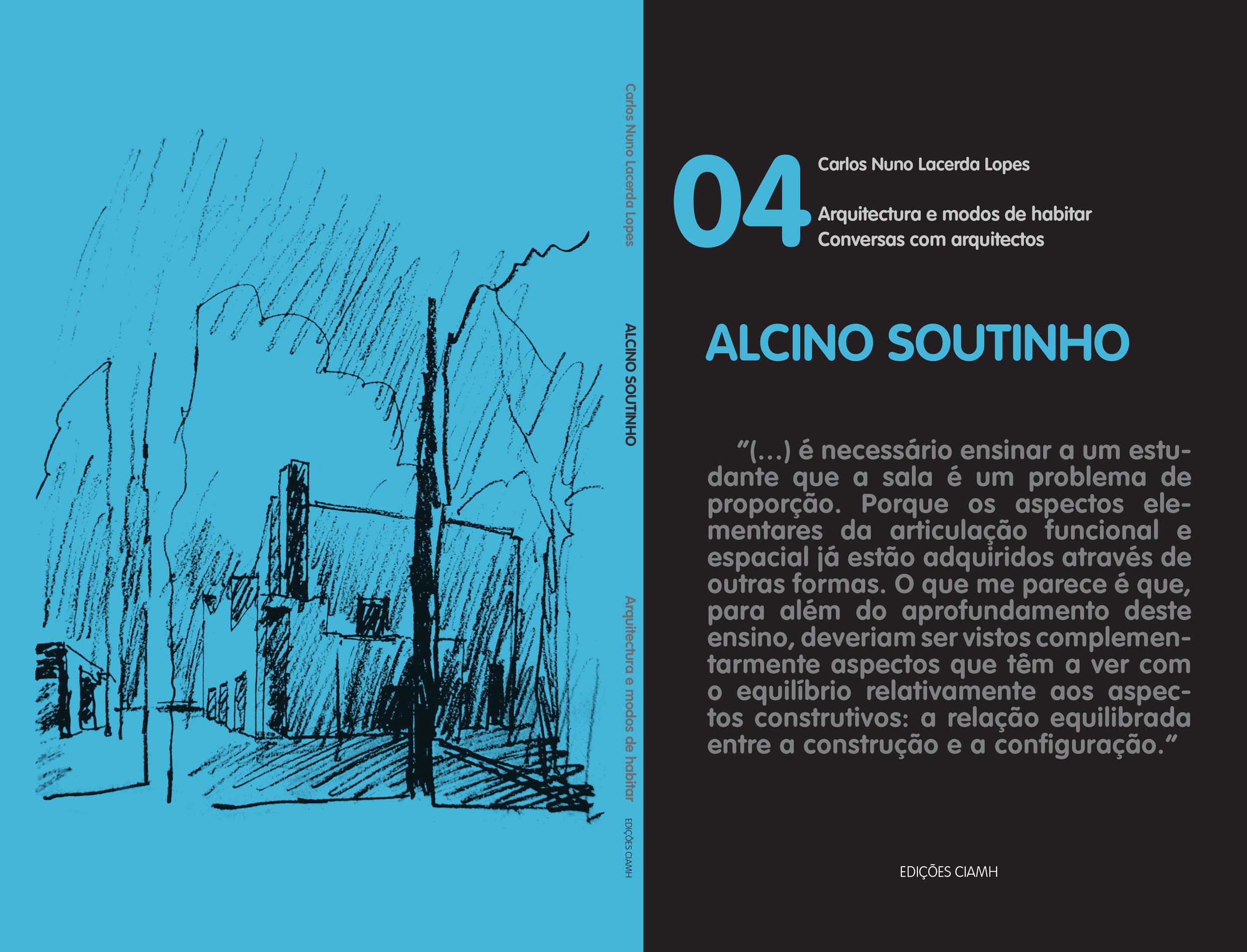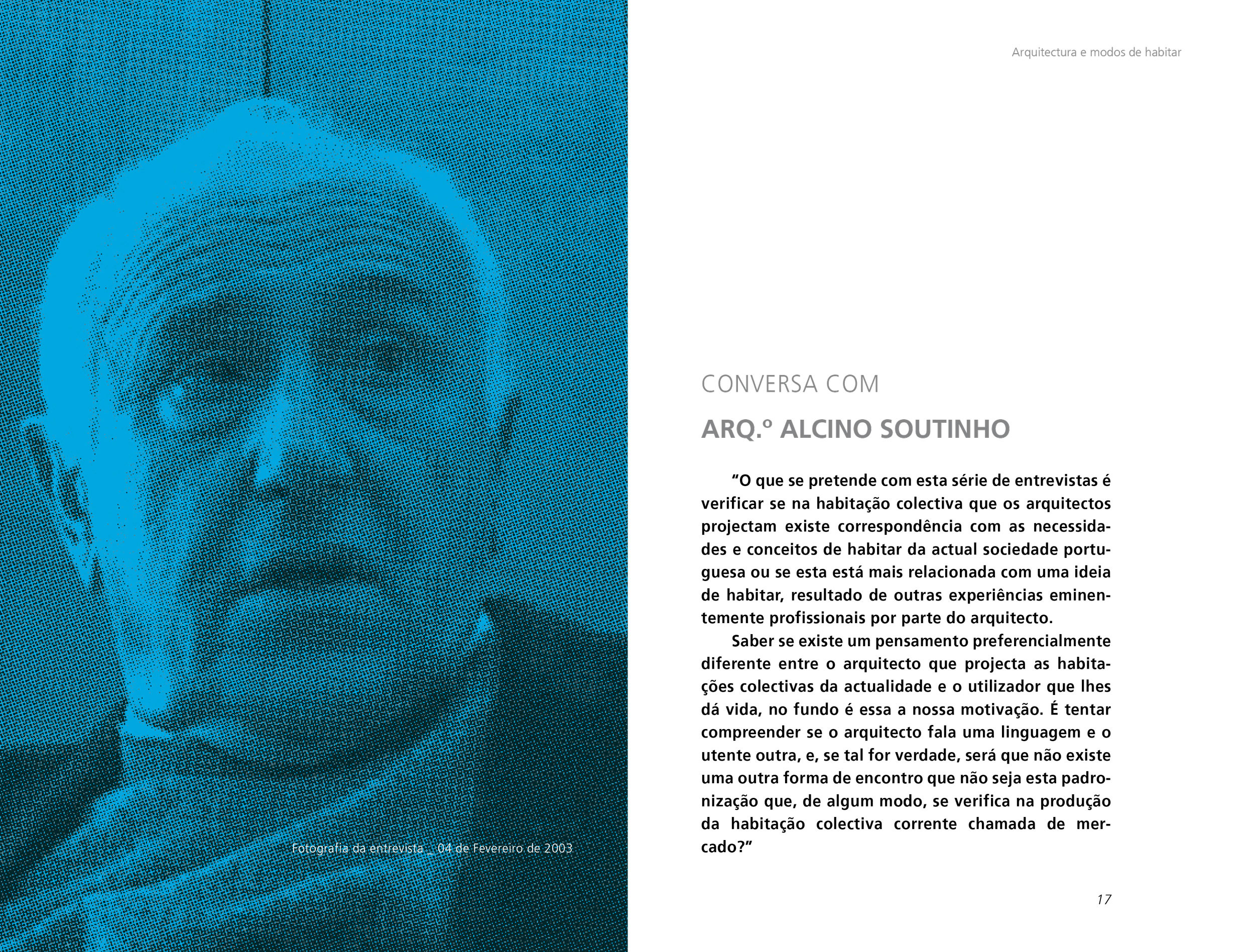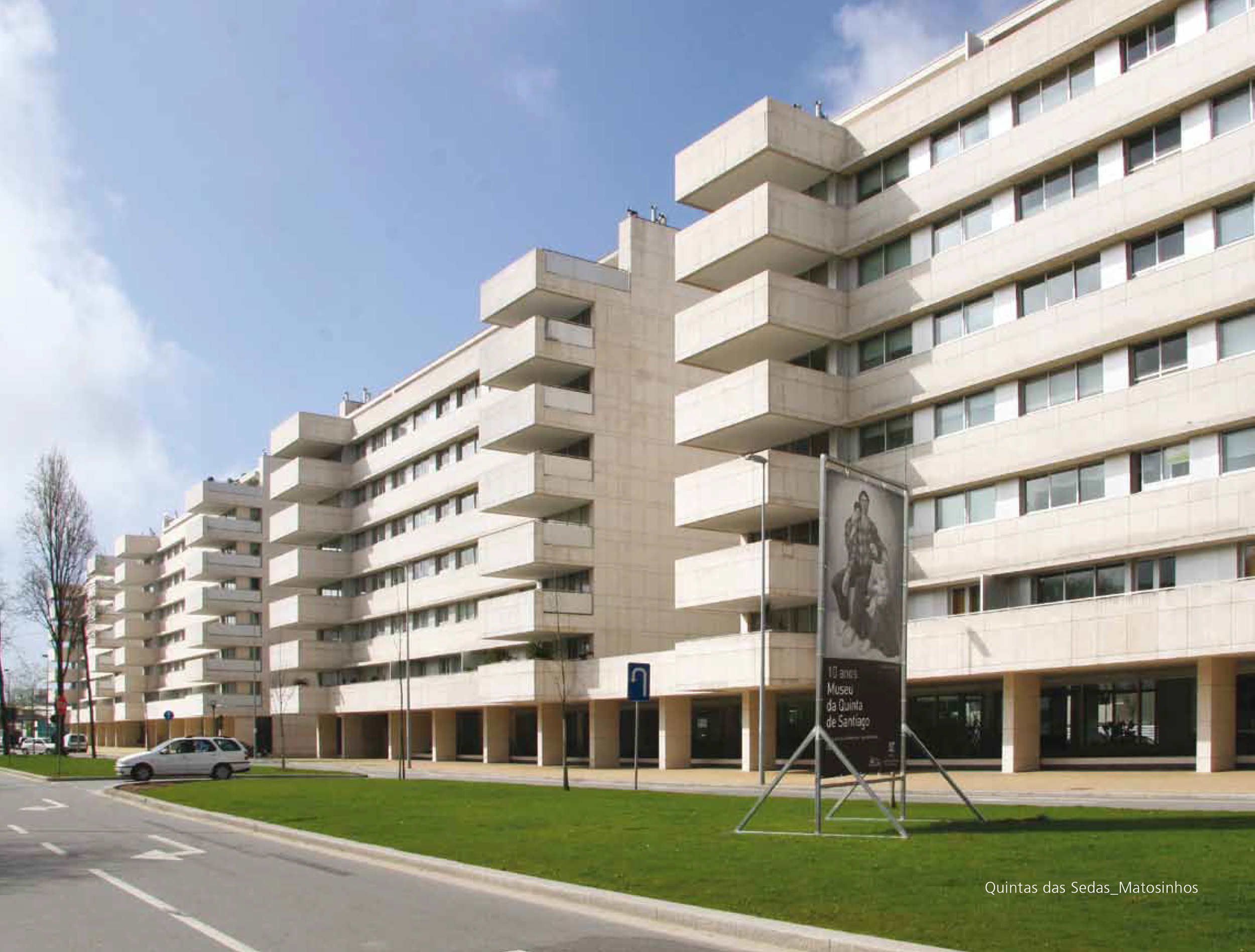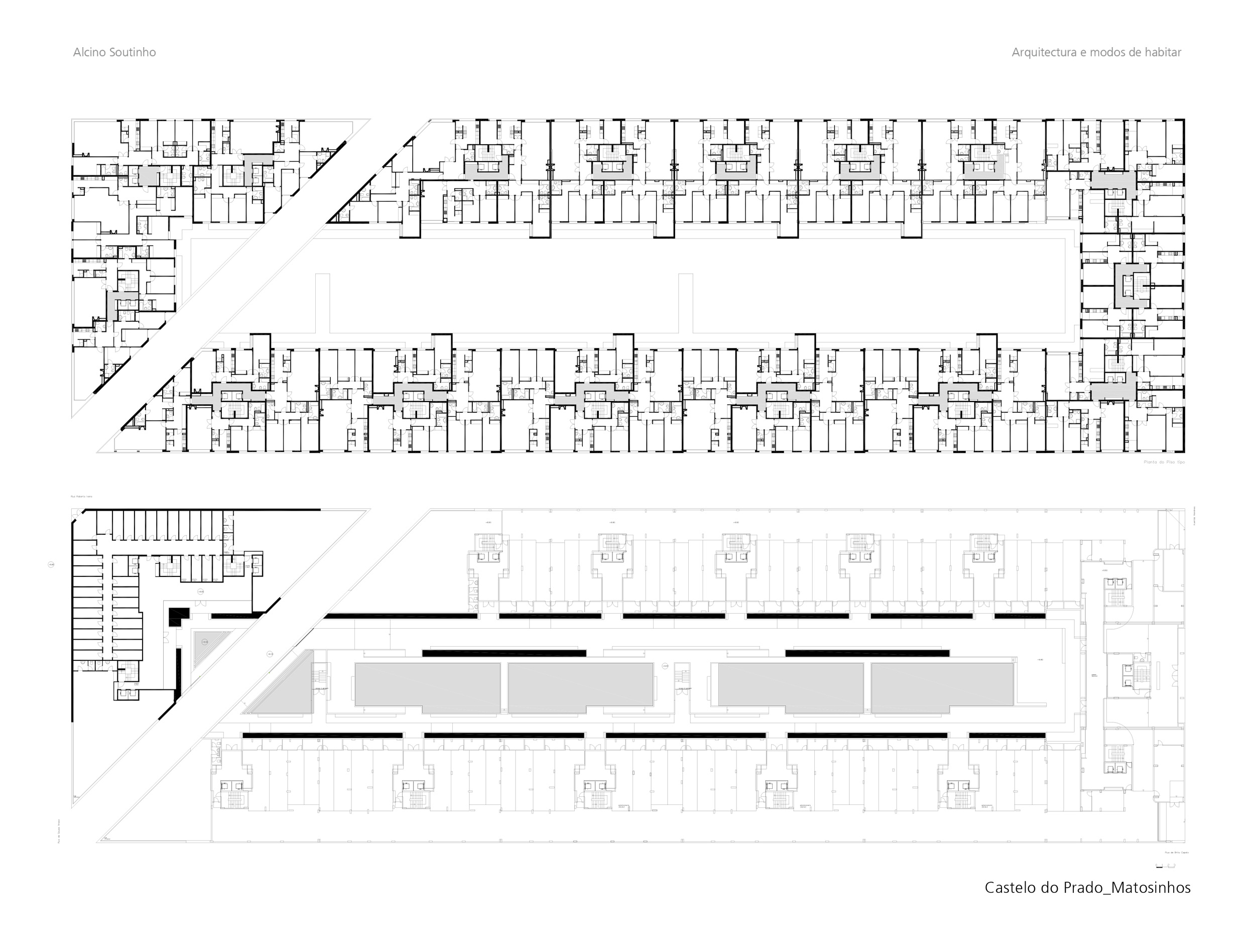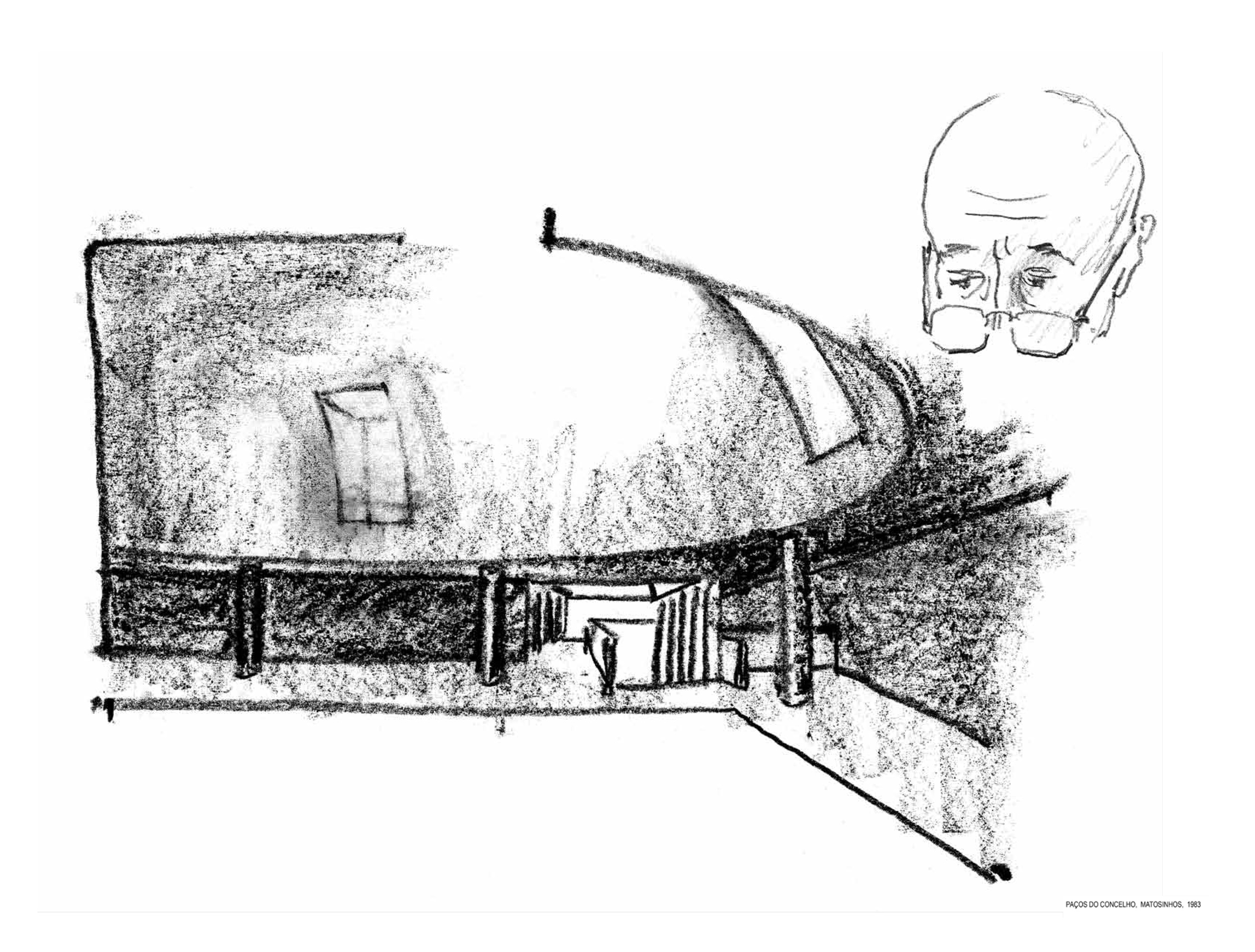ISBN
978-989-98073-3-4
Edition
CIAMH, FAUP
Year
2013
Number of pages
120
Dimension
14,5x22cm
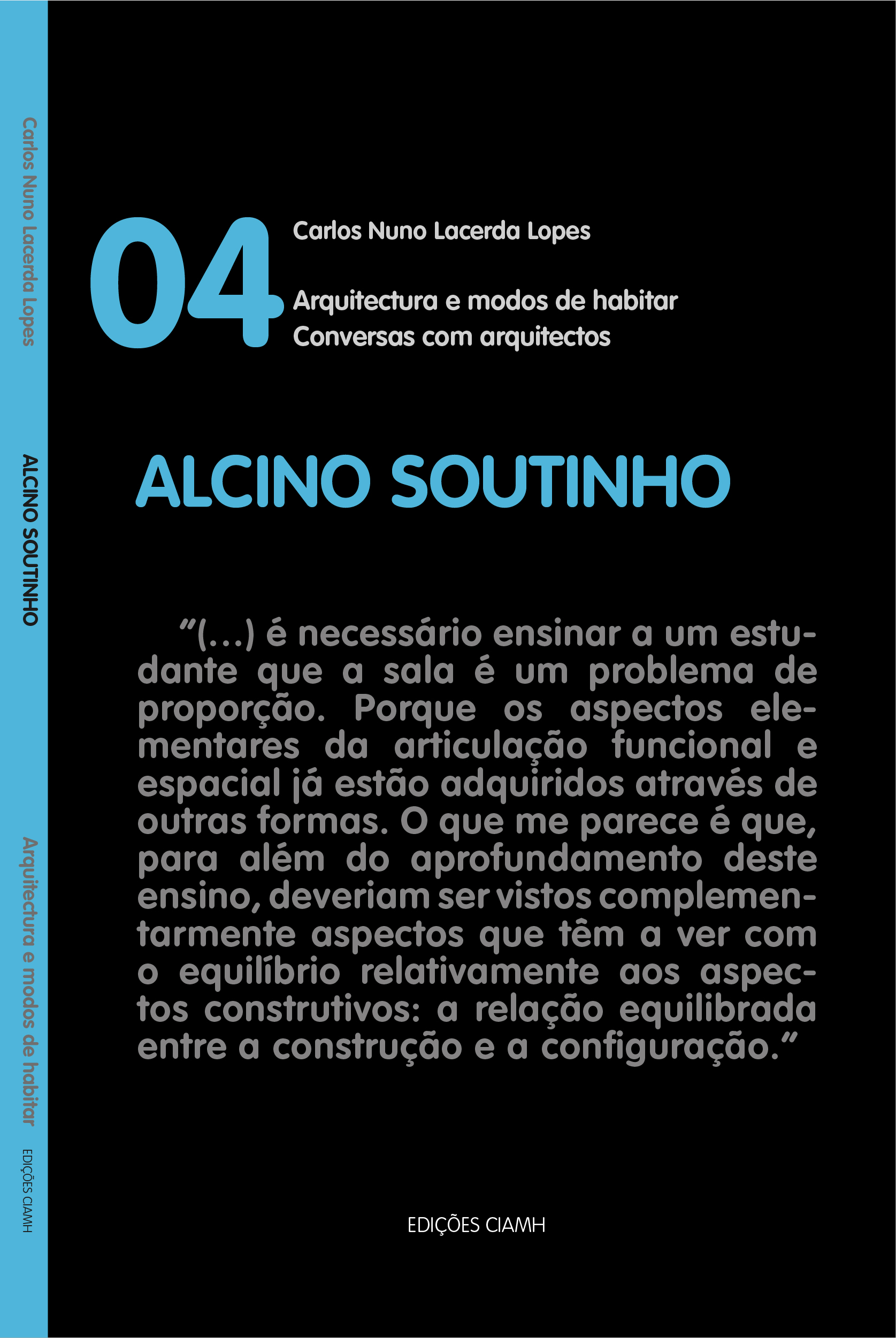
ISBN
978-989-98073-3-4
Edition
CIAMH, FAUP
Year
2013
Number of pages
120
Dimension
14,5x22cm
“This is a collection of interviews by architect Nuno Lacerda Lopes. They are conversations between architects of the School of Oporto where the process of building an ideal of architecture, profession, society and school is sought, based on a personal and open reflection and even clarify the theoretical and practical concerns as well as the circumstances that underlie Portuguese architecture today”.
Excerpt
“Good morning, architect Alcino Soutinho, one of the great architects of our School, with a remarkable work, with an enviable curriculum, which I am very pleased to have here with me. Lately, your work has been studied a lot, especially in Italy, some publications have come out. I am very pleased to see your work already with a lot of interest in terms of study. What I have always noticed is this expression: “the architect of the Oporto School exception”. I don’t know what you feel like saying about this sense that someone wrote about you. You have often been spoken of and referred to as the “architect of the exception”.
To a certain extent, there has been this concept, I am a kind of transgressor (I don’t like the term very much but I can’t think of another) in relation to the School of Oporto. I have always said that I have been connected to the concepts, principles and ideology of the School of Oporto. Only schools have their evolution: they have their beginning, their middle and their decline. I think that schools can maintain, not epidermically, a concept, a theoretical principle, which can then be formally expressed in completely different ways. Therefore, I consider myself eventually a transgressor in formal terms, but more epidermic than actually in the depth of concepts.
I have always been connected and in agreement with the School. I will not tell here the story of the birth of the Oporto School, because births are always very fluid and appear not well known how. There are a number of people who, at a certain point in life, meet and find that they have similar ideas, identical goals, and so on. So, of course, that generates what I said at the time was like those joke clubs that you could just say thirty-five and you already knew what you were going to say. And when we said that it was very beautiful, or that it was very ugly, there was no need to add great theories, we already knew what it was.
It’s a little of this atmosphere that generates the Oporto School (in a somewhat simplistic way and without entering into more advanced theories), and which was later accentuated with the SAAL process. The SAAL process was very important to sediment and consolidate this set of goals and ideas that were underlying the people who generated the Oporto School. And I was very quick to tell a little story that has to do with SAAL and which illustrates this well.
SAAL was a process that came about at an exceptional time in the country and where there were contacts with the so-called poor residents (we said it with some grace and with truth as well) to convey to them what we thought we would do. It was the effort to convey the idea of the architect to people who were untrained and some of them relatively poorly trained. Then, at the time, we realised that there was no room for a conversation. The projects had to be done. It was essential to do the projects. Then, suddenly, everyone went back to their “lair” and started to design, to draw, because it was urgent to do it. Later on, when the projects gathered to make a small publication without any great ambitions, just to see the sum of what was happening, we realised something fantastic: that, without any combination, because people came back and internalized in their concern to approach the project, there was a huge identity among the projects that were presented”.
